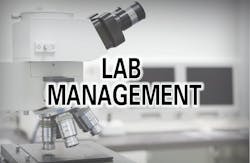Laboratory quality control – from error detection to risk management
Historically, laboratorians have had a habit of abbreviating “quality,” reducing it to a one-dimensional activity when discussing things like daily QC results and QA reviews. Of course, that doesn’t reflect the deep respect that laboratorians have for the word. In hospitals, reference laboratories and physician office laboratories, the concept of quality is ever-expanding to cover more and more aspects of laboratory operations in the form of effective Quality Management systems. While error rates in laboratory medicine are generally low, every error in the lab has the potential to end a patient’s life with a missed diagnosis or an unnecessary course of treatment. In recent years, both CLIA and the deemed Accreditation Organizations have emphasized an increased focus on quality assessment and laboratory-wide risk management.
The CLIA regulations, and the accreditation criteria of all deemed Accreditation Organizations, require that all clinical laboratories implement a Quality Management system in order to continually assess quality in pre-analytic and post-analytic activities. Comprehensive Quality Management is essential because many laboratory errors fall outside of the analytic processes that can be monitored with what we traditionally see as QC, such as running external controls on a regular basis. Every lab is different and has different areas of risk, and so the laboratory Quality Assessment plan should ideally be an individualized, flexible, living document, continually adjusted as the laboratory learns about new or changing sources of potential lab errors.
Managing risk
Laboratories have always implemented measures for managing risk. We establish policies for specimen rejection based on our understanding of interfering substances, analyte stability and instrument limitations. We focus on detailed and thorough training of new employees and documentation of ongoing competency for all testing they perform. We document open dates and expiration dates of reagents; we use delta checks of patient results to detect error and we perform regular verifications of instrument calibrations. Many fail to realize that these actions are all based on an underlying risk assessment. It’s just that in most cases laboratories have been taking someone else’s word about assumed risk, whether it’s the instrument manufacturer, an Accreditation Organization or published literature from professional clinical laboratory associations.
The Individualized Quality Control Plan (IQCP) was first implemented on an educational enforcement basis in 2014 to give laboratories more responsibility – and more ownership – over the assessment of the risks inherent in their own labs’ processes. Better analyzing a laboratory’s specific sources of error leads to the development of more effective and targeted strategies to mitigate them. In a sense, IQCP places quality control within the larger framework of quality assessment. Running QC samples at the frequency required by regulation or, in some cases at the frequency required by the manufacturer, at a minimum, will certainly reduce the risk of errors, but no test stands completely alone at the analytic phase. Quality must be considered throughout all phases of testing, including the laboratory’s complete pre- and post-analytic processes.
Five years later, what has IQCP done for laboratory quality?
From COLA Inc.’s perspective as an Accreditation Organization, we can report that IQCP-related citations have continued to decrease as laboratories learn more about how to properly implement IQCP. This is likely due, at least in part, to the educational materials made available to laboratories who are putting IQCP into action. Guidelines for the proper elements to include in a risk assessment, for example, help laboratories to do a more thorough job in their data collection and development of a QC plan that fits in their laboratory environment, using their personnel.
But are we doing enough? Is IQCP actually making an impact on overall laboratory quality? It’s difficult to say. Many other industries, especially those who are held to various stringent ISO standards, have been required for decades to collect and report data on errors, incidents and complaints. Medical errors are well-documented and widely reported, but there is a lack of accessible data on errors specific to the laboratory portion of healthcare. This is concerning as it is widely accepted that the majority of medical decisions are influenced, at least in part, by laboratory results. Without data to guide us, it is difficult to assess whether the implementations of new quality measures are making a difference in overall laboratory quality.
In 2019, risk assessment and IQCP are primarily being implemented for simple, moderately complex handheld or benchtop instruments whose systems and internal QC are robust enough for the manufacturer to recommend less QC than the regulatory requirements. While the risk management approach can be applied to any test system in the laboratory, in most cases it is only being applied to tests where it might lead to an immediate cost savings in QC.
However, labs that focus only on reducing QC when utilizing risk management have missed the boat. There may be circumstances where a laboratory should conclude, based on their analysis, to do more QC, not less, than the regulatory requirement.
Extra paperwork is a hard sell to laboratorians, especially when so many laboratories are already understaffed and overworked, and so much of the job is already dedicated to documentation. Clearly, when a majority of laboratories have concluded that IQCP is, “a way to do less QC,” we’ve failed to properly make the point that a proactive risk management approach benefits every aspect of the laboratory. It is better, safer and more cost effective to implement risk mitigation instead of corrective action, but the process requires an investment in time and mental energy and is all too easy to leave on the back burner.
How do we turn the wheel and shift laboratory culture away from reactivity and towards proactivity? How can we make the case that improving laboratory quality through risk management is of ultimate benefit to even the smallest laboratories?
Redefining quality control
It’s unfortunate that the term “quality control” has historically been reduced to controlling the analytic process via the testing of materials of known value. While that is indeed an important step in quality control, truly controlling the quality of a test result requires a much broader view. An effective Quality Control plan must encompass every step surrounding the testing, from the requisition to the final report and beyond.
Quality Control is everything that a laboratory does to ensure accurate and reliable results, over the entire testing process. It includes all the required elements of a risk assessment under the IQCP framework: the specimen, the test system, the reagents, the testing environment, the testing personnel and reporting the results. QC is training and temperature monitoring and checking expiration dates on kits before use. QC is well-written procedures and regular instrument maintenance. And yes, QC can also be running external quality controls on the test system and ensuring they are in range before reporting patient results. Quality Assessment, on the other hand, is how a laboratory can check whether the current Quality Control plan is effective. It is a regular review of each of the measures that have been put into place to safeguard test quality, to see if those measures are appropriate.
Quality Control and Quality Assessment aren’t separate processes; each is very much a part of the other. They need to be used together in order to truly effect change. When a robust Quality Management system, with buy-in from laboratory leadership, implements a risk assessment approach by collecting and sharing data, a laboratory can devise specific plans to improve the quality of their laboratory processes at every step of testing. It is then a matter of continually asking ourselves: is this working? Are these measures enough? By regularly collecting data around the QC measures that have been implemented, a lab can adjust as they go, instead of waiting for a laboratory error to force them into action.
Collaboration can lead to change
Data is a major driver of change. If we are dedicated to improving laboratory quality, we must work harder to collect and disseminate data about the current state of affairs in the laboratory world. Individual laboratories can collect data on their own errors, not only to know how many are happening, but also to pinpoint areas in their labs that are more prone to risk. Sharing this data with others can also lead to tremendous insight about laboratory testing overall; labs should be encouraged and empowered to share their failures and successes with others in their parent health systems and beyond, via articles, blog posts and presentations at laboratory conferences. This helps to support a culture of mutual growth and a holistic approach to error prevention, instead of one of shame, isolation and blame. No lab is an island, after all. We can, and should, learn from each other.
About the Author

Jennifer MacCormack
is the Post Survey Team Leader with COLA, where she provides consultation to lab clients regarding regulatory compliance and quality lab practices, and guides member laboratories through the Accreditation process. She is a licensed Medical Laboratory Scientist with over a decade of experience in high-volume hospital blood banks and core laboratories. She holds a BS degree in Human Physiology from McGill University and a Medical Technology degree from Dawson College. She is also a freelance science writer whose articles are featured on websites dedicated to consumer safety, STEM outreach and science communication.
